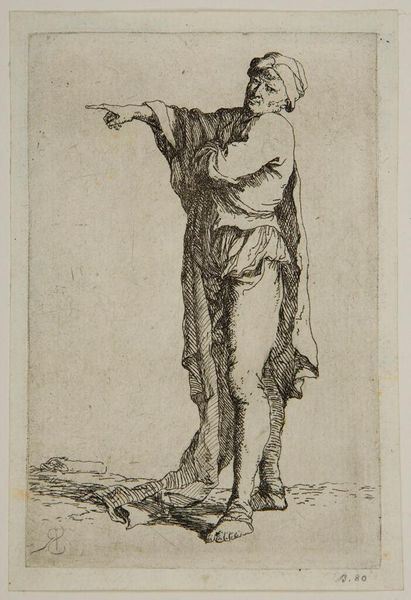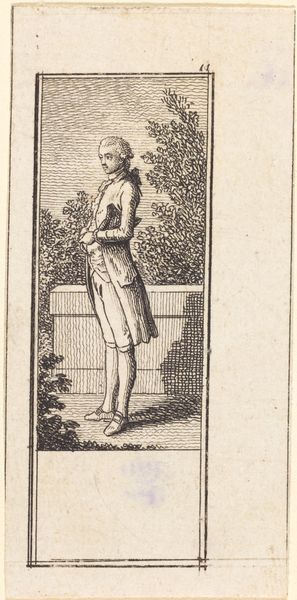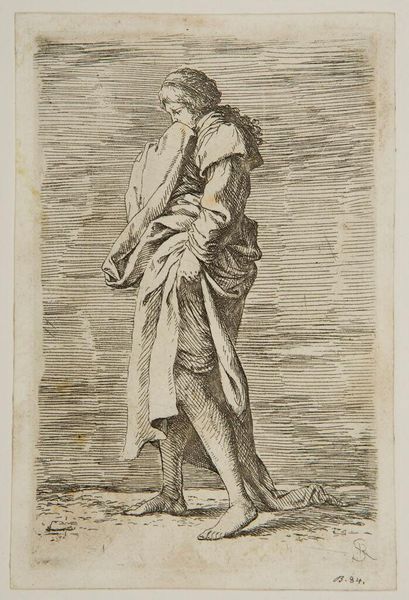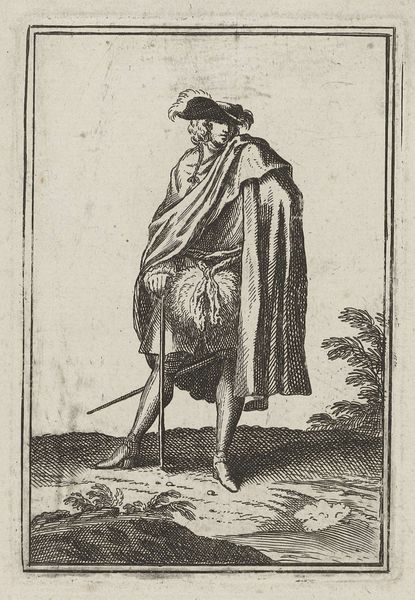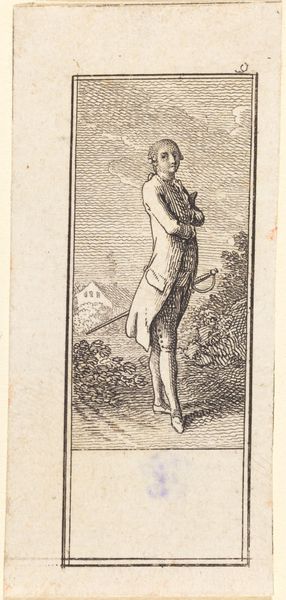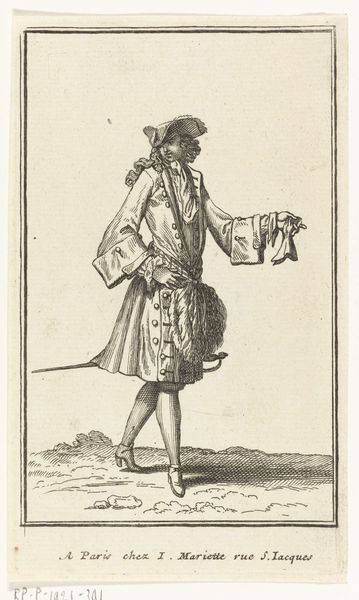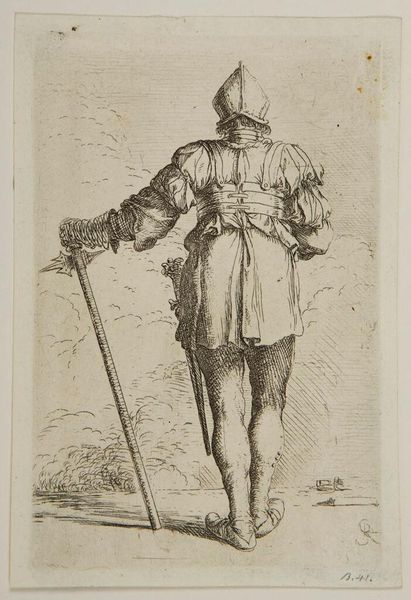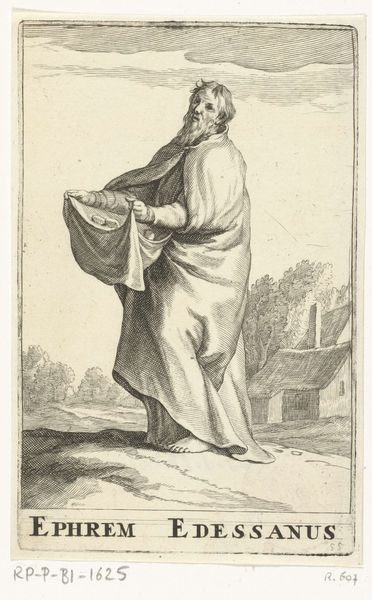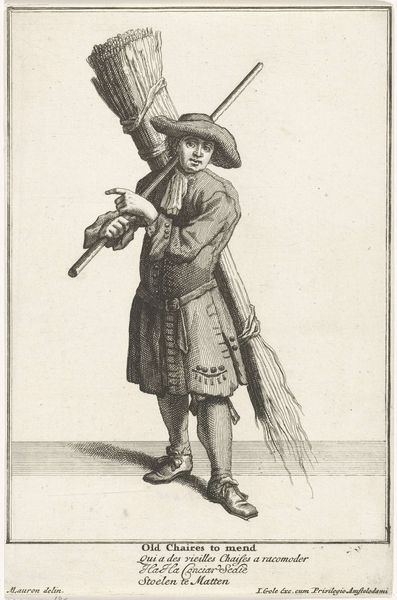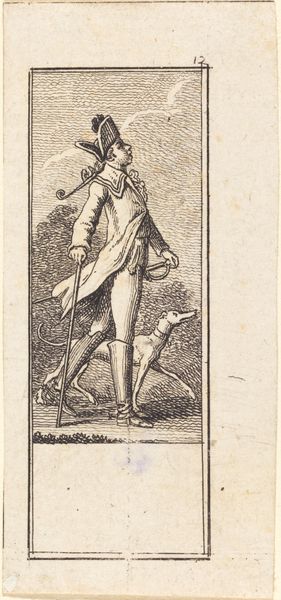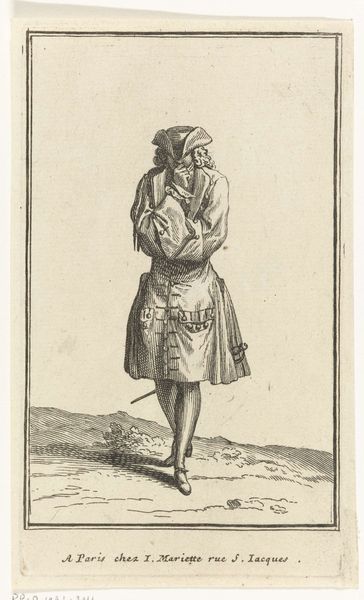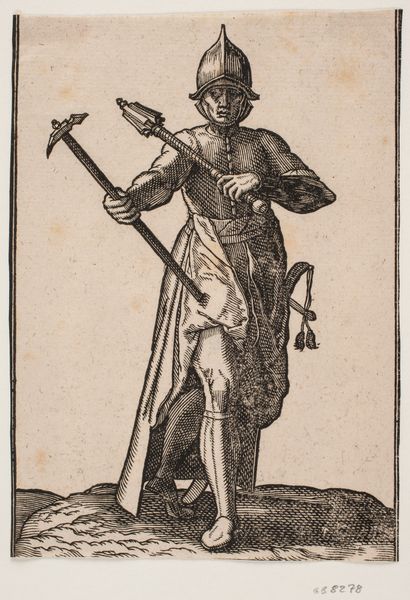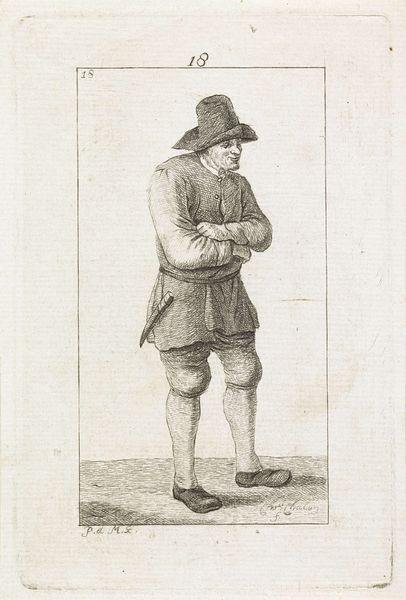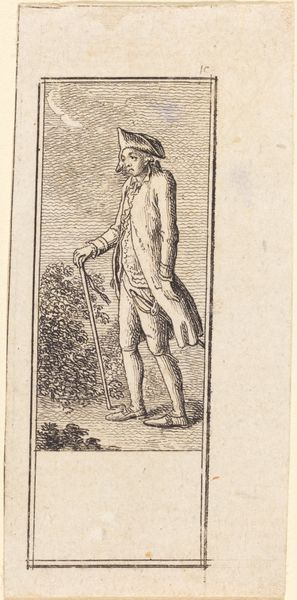
drawing, engraving
#
portrait
#
drawing
#
landscape
#
figuration
#
line
#
genre-painting
#
engraving
Dimensions: height 171 mm, width 230 mm
Copyright: Rijks Museum: Open Domain
Curator: Claude Louis Desrais created this engraving, “Le Chevalier en habit de campagne,” in 1778. It now resides in the Rijksmuseum collection. Editor: It's a figure turned away from us, positioned in front of a landscape, yet it gives the impression of being strangely confrontational. It exudes an odd confidence; his gesture is oddly assertive. Curator: Let's consider the formal elements first. Note the precision of the lines. Desrais employed tight hatching to suggest form and texture in the figure's coat, contrasting with the sparser strokes to depict the distant landscape. The stark contrast contributes to the image's intensity. Editor: I am interested in what is absent here. His averted gaze obscures any insight into his inner world, even into who might receive the force of this pointed direction. It makes me think of performative masculinity, the way in which elite men publicly displayed power and asserted dominance in 18th-century French society. His hand almost serves as an accusing arrow. Curator: You raise a stimulating point. His back confronts us, but the gesture of his outstretched hand injects tension. In the context of genre-painting portraiture of this era, what are we to infer? Consider how the landscape's gentle rolling hills provide balance to his forward-thrusting gesture. Editor: The figure's clothing tells its own story of class, which surely feeds into the image's assertion of social position. Even in “country clothes," there is an obvious air of aristocracy to the "chevalier." Curator: Certainly, class is visibly performative. Note, for example, how Desrais rendered the sword, partly visible—an integral element to both attire and power, adding an unspoken weight to the overall composition. The suggestion of refinement even in "casual dress" points to an intentional contradiction. Editor: Yes, he is the image of an elite male removed to a scenic distance—from where, and from whom? In the late 1770s, did he foresee the rising disaffections of those not permitted the freedom to live leisurely amongst the hills? This chevalier in "country dress" strikes me as a powder keg of oblivious privilege. Curator: Interesting how analyzing the artist’s strategic contrasts opens unexpected doors for contemplating power. Editor: Indeed, and perhaps there is a warning, still relevant, in that confident hand.
Comments
No comments
Be the first to comment and join the conversation on the ultimate creative platform.
